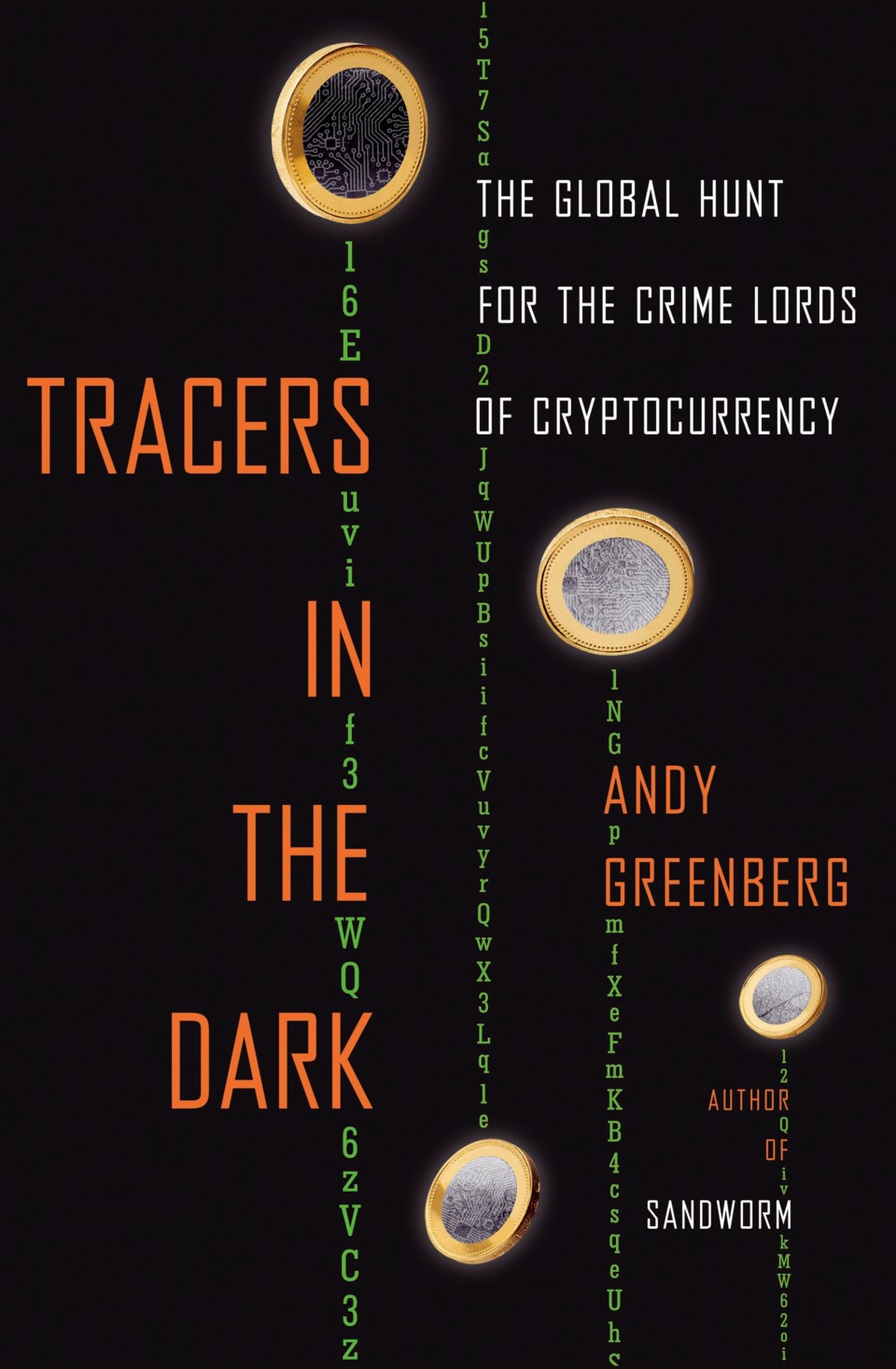“Tracers In The Dark" by Andy Greenberg (Doubleday)
The year was 2011. Cryptocurrency was a little-understood novelty, and Sen. Chuck Schumer called a news conference to vent outrage over a one-stop online shop for illegal drugs whose technology made sellers “virtually untraceable.”
The New York lawmaker’s description of Silk Road helped seed a persisting myth that technology reporter Andy Greenberg exhaustively dispels in “Tracers in the Dark,” that transactions of Bitcoin and other cryptocurrencies can’t be tracked.
Greenberg sketches the evolution of a wholly new discipline in the surprisingly lively real-life police procedural, following law officers and programmers who invent and deploy cryptocurrency-tracking tools to catch a new breed of criminal. They take down Silk Road and other “dark web” markets and merchants, finger crypto money launderers and snare the sysadmin and users of Welcome to Video, a major South-Korea-based distributor of child sexual abuse material.
Best of the action are two takedown dramas. A young Quebecois behind the AlphaBay dark web market, Alexandre Cazes, lives large in Thailand, rocketing around in a Lamborghini, running up $12,000 restaurant bills and boasting of adulterous sexploits online. The other takedown is of a DEA agent and a Secret Service agent who illegally enriched themselves off Silk Road while investigating it – each wholly on their own.
But Greenberg is more interested in the uber-geeks blazing this new digital law enforcement trail as they track cryptocurrency on the so-called blockchain, where every transaction is recorded. The people making the transactions may not be immediately identifiable and often use so-called “mixers” to try to obscure them. But painstaking digital sleuthing – and carelessness – foils many cybercrooks.
In the spotlight are Armenian-born accountant-turned-IRS agent named Tigran Gambaryan and blue-eyed Danish programmer Michael Groniger, co-founder of Chainalysis, a pioneer in commercial crypto-tracing, which counts law enforcement and intelligence agencies among its main customers. Readers also meet academic crypto-tracking pioneer Sarah Meiklejohn, a meticulous prosecutor’s daughter.
To his credit, Greenberg deftly teases out technical detail without slowing the narrative. A writer for Wired, he’s done this in other titles charting the beginnings of major tech phenomena. “This Machine Kills Secrets” explores WikiLeaks and other actors in politically motivated secrets-spilling. “Sandworm,” named for a notorious Russian military hacking team, chronicles the rise of cyberattacks.
“Tracers” following its main characters through the Silk Road and AlphaBay takedowns, the 2014 theft of the Bitcoin exchange Mt. Gox ($530 million at the time) and the disturbing Welcome to Video bust. The agents who worked that case can never unsee the terrible images they gathered as evidence, linking purchases to patrons’ cryptocurrency wallets.
Well told is how Dutch cyber police surreptitiously take over and run the Hansa dark web marketplace just as patrons of the shuttered AlphaBay sign up in droves. The author also tackles newer cryptocurrencies including Monero and ZCash that claim untraceability.
One tale Greenberg is unable to tell well is of the biggest criminal cyber coin exchange to date, BTC-e. That’s hardly his fault.
Before it was taken down in 2017, BTC-e was the No. 1 laundering facility for proceeds from extortive ransomware gangs, who like the exchange operate mostly in post-Soviet countries. Important details of its relationship with the Kremlin remain unreported. It’s alleged administrator, Alexander Vinnik, was arrested in Greece and extradited to the United States. The rare Russian cybercrook to face Western justice, he is alleged to have laundered more than $4 billion and awaits trial in California.
For all their success tracking Bitcoin and other cybercurrencies, the heroes of Greenberg’s book are often frustrated by a lack of Russian legal cooperation in particular. None of the powerful tools smithed by programmers at Chainalysis and its competitors – Elliptic and TRM Labs, among them – can put away a thief that justice cannot reach.
Frank Bajak, The Associated Press



